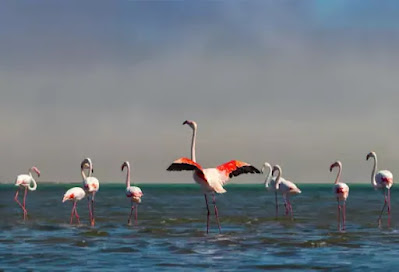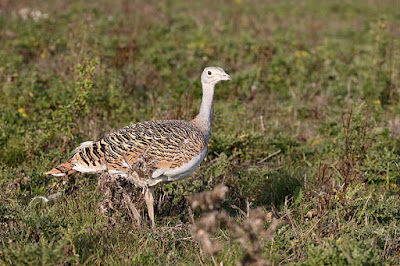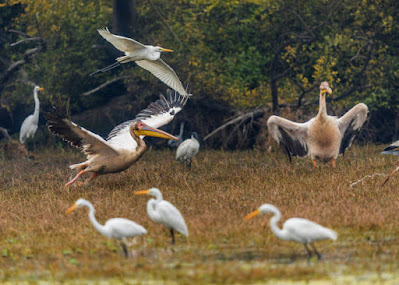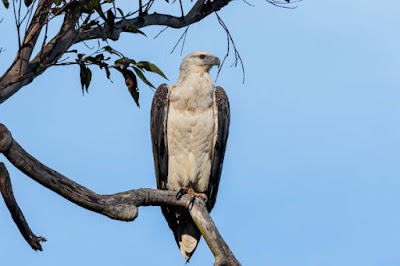Indeed, India is one of the most astonishing nations with outlandish biodiversity and overflow of bird species. The nation has so many bird asylums where various types of birds from various regions of the planet run in various seasons. Some act as regular territories for these birds and safeguard them. For sharp bird watchers, we have gathered a rundown of the best bird safe-havens in India. So you can appreciate bird watching in top 7 entrancing bird safe-havens in India.
Table of contents
- Mayani Bird Sanctuary
- Great Indian Bustard Sanctuary
- Jaikwadi Bird Sanctuary
- Karnala Bird Sanctuary
- Naigaon Mayur WLS
- Nandur Madhmeshwar Bird Sanctuary
- Thattekad Bird Sanctuary
1. Mayani Bird Sanctuary (Satara)
 |
| Mayani Bird Sanctuary-satara |
If you are in Satara for some experience then Mayani Bird Sanctuary is the ideal decision. one of Satara's well known places of interest that you should never miss. The Mayan asylum has various species and assortments of birds. This safe-haven is an ideal shelter for bird darlings from everywhere nature of the world.
The Mayani Bird Sanctuary was worked during the British times when they managed our country. This specific safe-haven has in excess of 400 distinct types of birds and species from various urban areas and nations.
Location: SH76, Satara, Kankatre, Maharashtra.
Timings: 7:00 AM to 9:00 PM
Entry Fee: INR 15 per person
.
2. Indian Bustard Reserve (Solapur)
 |
| Indian Bustard |
The Bustard Reserve is a nature save for the Bustard in Solapur, Maharashtra, India. The dirt is dry season inclined and is semi-parched. It is situated in the Deccan thistle clean woodland ecoregion. Maharashtra is one of the six Indian states where Indian Bustards are as yet found.
The Great Bustard is a huge ground bird around one meter tall. It is unquestionable with its dark cap standing out from the pale head and neck. The body is tanish with a dark fix of white.
The male is a profound sandy brownish variety and has a dark bosom stripe during the reproducing season. The crown of the head is dark and peaked and swelled by the guys shown. In the female, which is more modest than the male, the head and neck are not unadulterated white, and the pectoral band is either simple, broken, or missing.
As per concentrates on completed by the Bombay Natural History Society on three types of bustard - specifically the bustard, lesser florican and Bengal florican - the absolute bustard populace in each of the 12 safe-havens in the nation is assessed to be something like 1000, of which somewhere around 30 birds were last included in shelter.
3. Jaikwadi Bird Sanctuary (Aurangabad)
 |
| Jayakwadi Bird Sanctuary |
Jayakwadi Bird Sanctuary is a bird safe-haven. It is situated close to Jayakwadi town in Paithan taluka of Aurangabad area in the province of Maharashtra, India.
The safe-haven is situated on 30 islands of different sizes in shallow waters with trees for settling; this gives ideal sanctuary to transitory birds.
This place of refuge has more than 200 kinds of birds including 70+ sorts of transient birds. Cranes, flamingos, pintails, wigeon, shoveler, brahmin duck, pochards, greenish blues, godwits, Shauces and cleaned ibis are a piece of the transient birds considered to be here.
Location:Paithan,Dist:Aurangabad,
Maharashtra Timings: 7:00 AM to 9:00 PM
Entry Fee: 8:00 AM to 5:00 PM
4. Karnala Bird Sanctuary (Raigad)
If you are a nature lover, this bird sanctuary will be the best Panvel tourist spot for you for its admirable assortment of exotic plants and more than 200 species of native and migratory birds.
You can choose from interesting trails like Hariyal and Mortaka Nature Trails to see birds like kingfisher ,Malabar Lark, Lesser Sunbird, Nilgiri Wood Pigeon, Silky-footed Rattlesnake etc. More than 30 species of migratory birds like Blue-throated Blue-throat, Ashy Minivet and red-breasted nightingale. shrine every year.
Don't miss seeing the colorful butterflies as you walk through the beautiful wilderness. If you visit during the monsoons, you can see many small gorges bubbling with water that further enhance the beauty of the sanctuary. The sanctuary is also home to the ancient 12th century Karnala fort which is a must visit.
Location: Karnala Village, Raigad District, Maharashtra.
Best time: July-August and October-February.
Timings: Every day from 7:00 a.m. to 5:00 p.m.
Entrance fee per person: Rs. 35, camera charges: Rs. 100
5.Naigaon Mayur WLS (Patoda)
Mayur means Peafowls. Peacock is the national bird of India and Naygaon Sanctuary is home to the beautiful bird. Nestled among the villages of Patoda in Beed district, this hill sanctuary is teeming with passionate fauna and flora.
Various animals can be found such as Blackbucks, Porcupine, Hyenas, forest Cats, Foxes, Palm Civets, Hares and so on. Many times these animals come to villages in search of food.
The Blackbuck image in this article is taken from a roadside farm. Although the ideal season to visit Naygaon Sanctuary is listed as June to October, I can safely say that you are welcome here almost all year round.
I visited the place at the end of December and found it extraordinary. Good accommodation can be found in the surrounding towns.
Just 20 km from Beed, the shrine can be another attraction on the way to holy places like the Jyotirlingas of Aundha Nagnath (Hingoli) and Vaijnath (Parali).
6.Nandur Madhmeshwar Bird Sanctuary (Nashik)
A wonderful bird safe-haven shaped by the stale waters of the dam. Situated close to Nashik in somewhere around 45 minutes drive.
There are 3 lookouts for bird watching. We went during rainstorm season when just Indian birds are available. During this season you really want a major zoom in light of the fact that the birds are at some distance.
Transient birds show up throughout the colder time of year. The neighborhood guides have excellent long range focal point hardware and are very proficient and accommodating.
The spot has latrines and an extremely fundamental lounge area. The charges are entirely sensible.
Flora:There are around 460 types of plants, including just about 80 types of oceanic plants.
The trees found on the edge of the lake are Babul, Neem, Tamarind, Jamun, Maharukh, Vilayati Chinch, Mango, Pangara, Nilgiri and so forth.
The encompassing regions and to some extent lowered regions are seriously developed for Wheat, Jowar, Sugarcane, Vegetables and so on.
Location : City:Niphad , Dist: Nashik , Maharashtra
Best Time to Visit: November to January
Entrance Fee: Adults Rs.20, Children Rs.10, Above 6 to 12 Years.
7.Thattekad Bird Sanctuary (Kerala)
Having a wonderful scene with less packed regions. Need to visit early morning which will assist with seeing more birds. Butterfly garden is additionally great spot to visit. Additionally there slow down accessible to purchase interesting products like shoe wood pieces.
Thattekad Bird Sanctuary Tourism Located close to Kothamangalam in Ernakulam on the north bank of the Periyar Park River, Thattekad Bird Sanctuary is known for its rich and different bird life.
It is the main bird safe-haven in Kerala to be overviewed by Dr. Salim Ali (a bird man from India) who likewise portrayed it as the most extravagant site he had at any point seen.
This asylum was uncovered in 1983 on the suggestion of this popular ornithologist.
Spread north of 25 square km, it gives haven to in excess of 500 types of birds and uncommon cases like the thrush, ruddy yellow lark and white-bellied flycatcher.
As you swim through thick woods containing tropical semi-long-lasting, deciduous and tropical evergreens, don't miss a backwater boat journey.
The variety of living spaces and the geographical area of the area make it one of the most famous bird asylums in India.
Location:4MHp,Kothamangalam,PooyamkuttRoad, Nyayapal, Thattekad, Kerala 686681.
Time to visit:7am to 5pm.
The entry fee: Bird Sanctuary is INR 10 per person for Indians and INR 100 per person for foreigners.
You may also like :3 Kinds Of Hornbill Birds For The Most Part Found In Sri Lanka and India






